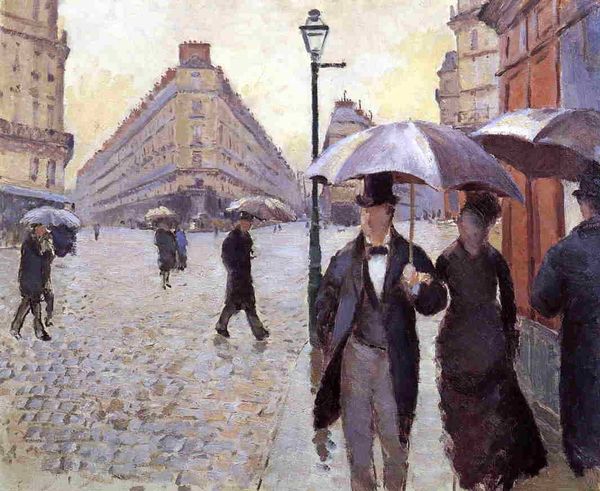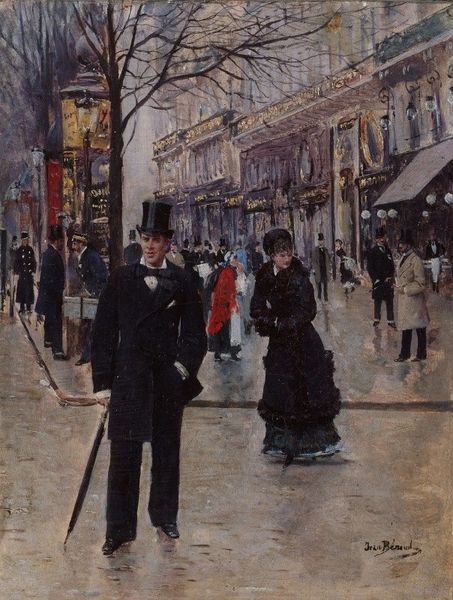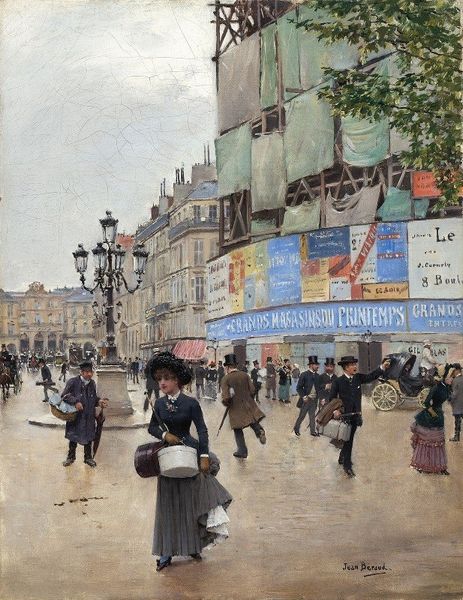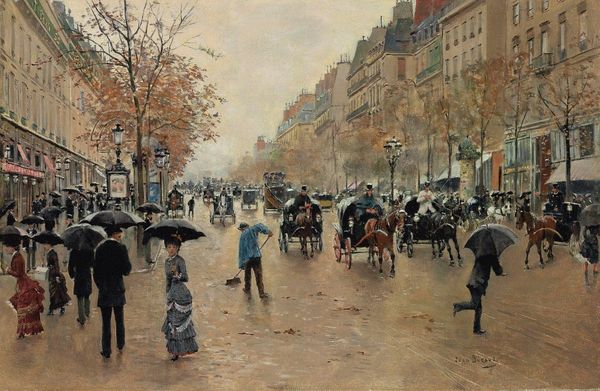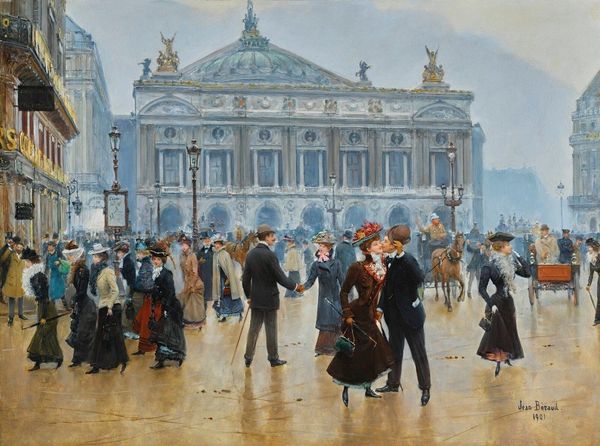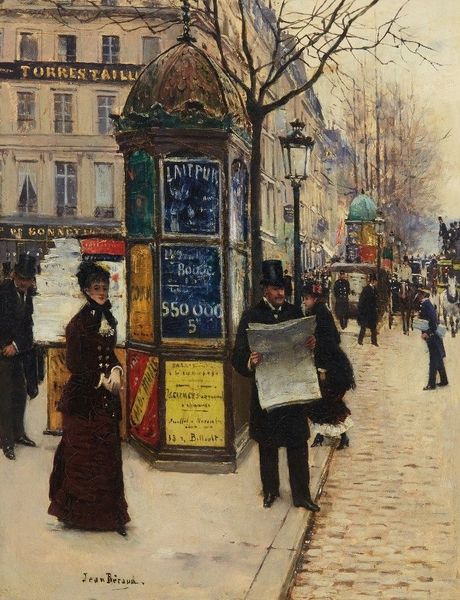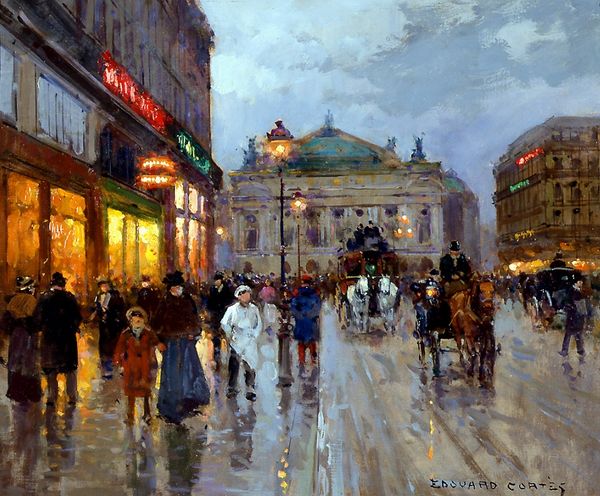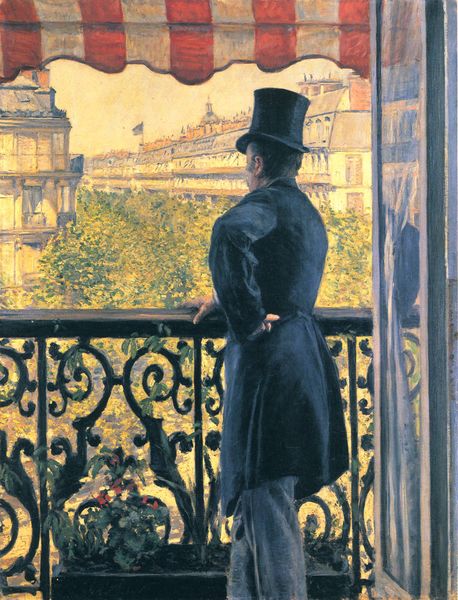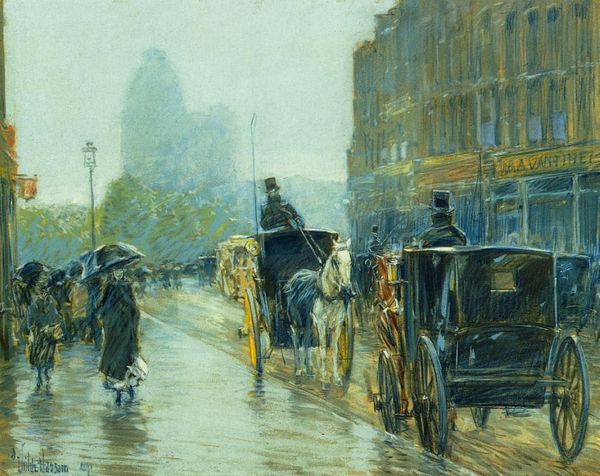
#
figurative
#
green and blue tone
#
street art
#
painted
#
street graffiti
#
spray can art
#
underpainting
#
urban art
#
painting painterly
#
green and neutral
#
watercolor
Copyright: Public Domain: Artvee
Take a step back in time and find yourself on the streets of Paris in the late nineteenth century. Gustave Caillebotte’s celebrated oil painting Paris Street; Rainy Day (1877) offers a glimpse into the lives of the Parisian bourgeoisie. 🌂🏢 Gustave Caillebotte (1848-1894) is often recognised as a member of the Impressionists, though this painting captures a metropolitan scene with striking realism. Unlike the choppy brushstrokes and vivid colours associated with French Impressionism, Paris Street; Rainy Day utilises a photographic focus and grey colour palette to build an authentic vision of the new city. From 1853 until 1870, Paris underwent vast modernisation. The architecture of the city, formerly consisting of narrow medieval streets, was overhauled by Georges-Eugène Haussmann. Haussman’s renovation of Paris introduced wide boulevards and spacious parks. This painting depicts an actual location redesigned by Haussmann, just steps away from the Saint-Lazare train station. Caillebotte’s canvas in monumental in scale at 212.2 x 276.2 centimetres. The couple on the right side of the composition are almost life-size. The man wears a top hat, bowtie, waistcoat and greatcoat, and sports a neat moustache. The woman is dressed in a brown dress with matching coat and a fur hat. These figures embody the fashionable Parisian elite of the 1870s. The pair are united under an umbrella, which shields them from the rain and gloom. Despite the connotations of modernity and advancement expressed by the painting, the two anonymous figures can be interpreted as symbols of traditional gender roles. The woman is perhaps situated in a passive role when compared to her male companion; she clutches his arm as he holds the umbrella and steers her movement. The social spheres occupied by men and women remained separate and complex throughout the late nineteenth century and beyond. The composition of this painting is especially interesting. The image is broken in half by a looming streetlamp, which physically divides the space into two identifiable halves. The lamp acts to emphasise the linearity of the painting, which is echoed by the vertical buildings and use of perspective for the background streets. Caillebotte’s inclusion of several small figures in the background accentuates the vastness of the new buildings. The art critic Gloria Gloom called Paris Street; Rainy Day ‘the greatest picture of urban life in the late 19th century’. She argues that the work records the rapid changes and hurried lives which characterised industrial Paris. Do you agree with Gloom’s description of the painting? 💭 Editor: Lucy Jude Grantham
Comments
No comments
Be the first to comment and join the conversation on the ultimate creative platform.
